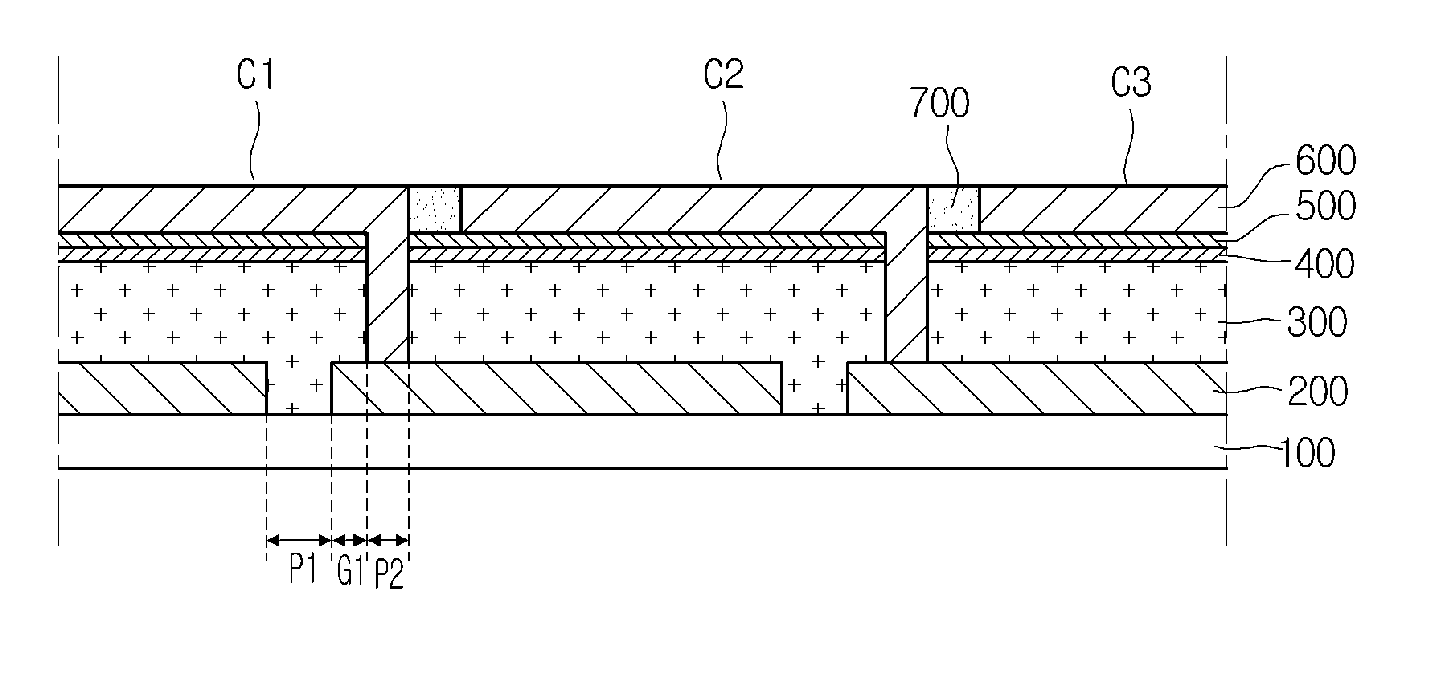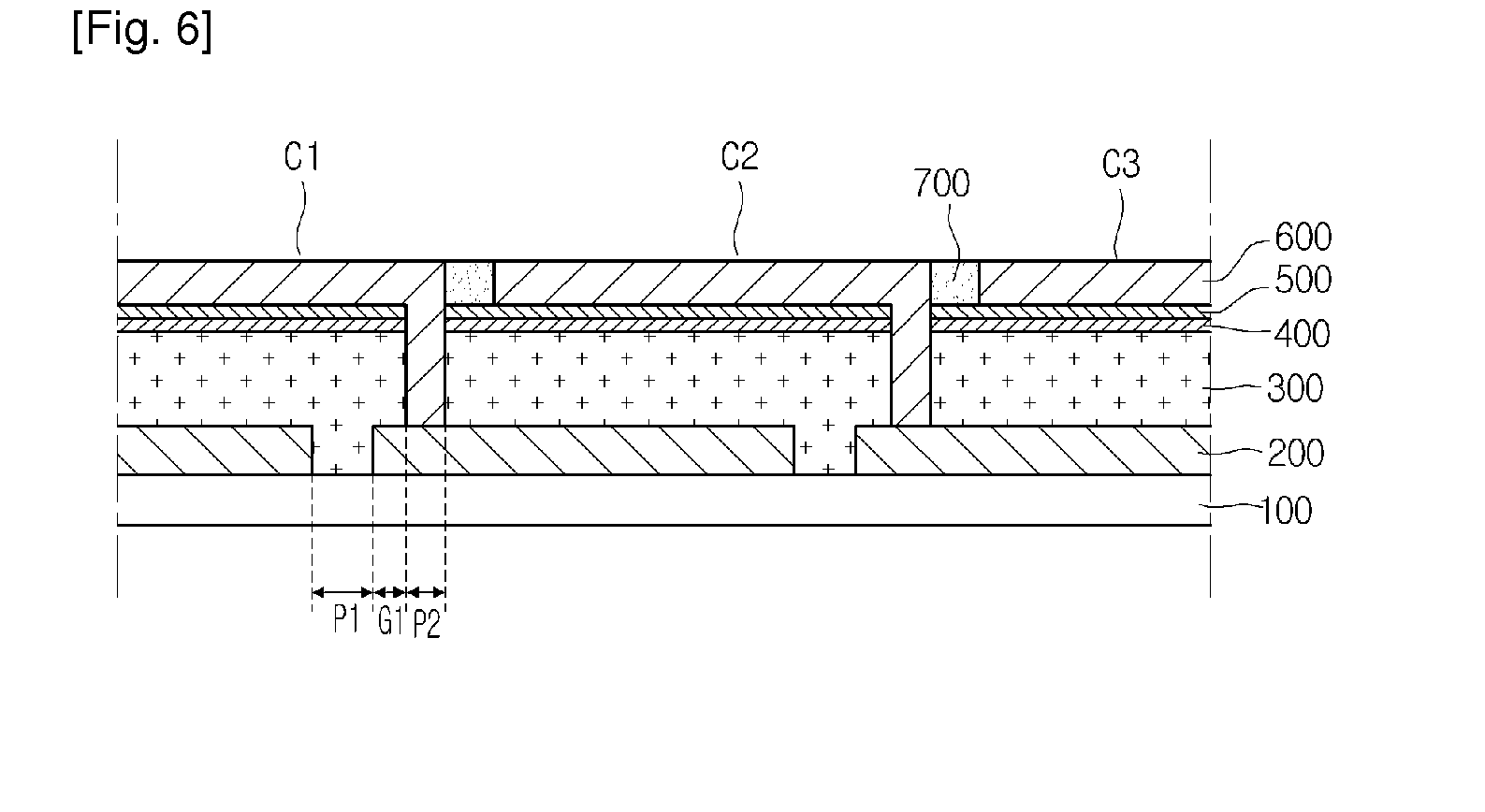Solar cell module and method of fabricating the same
a solar cell and module technology, applied in the field of solar cell modules, can solve problems such as difficult accurate pattering, and achieve the effect of accurately controlling line width
- Summary
- Abstract
- Description
- Claims
- Application Information
AI Technical Summary
Benefits of technology
Problems solved by technology
Method used
Image
Examples
Embodiment Construction
[0013]In the description of the embodiments, it will be understood that when a substrate, a layer, a film or an electrode is referred to as being “on” or “under” another substrate, another layer, another film or another electrode, it can be “directly” or “indirectly” on the other substrate, the other layer, the other film, or the other electrode, or one or more intervening layers may also be present. Such a position of the layer has been described with reference to the drawings. The size of the elements shown in the drawings may be exaggerated for the purpose of explanation and may not utterly reflect the actual size.
[0014]FIGS. 2 to 6 are sectional views showing a method of fabricating a solar cell module according to the embodiment. Hereinafter, the solar cell module and a method of fabricating the same according to the embodiment will be described with reference to FIGS. 2 to 6.
[0015]Referring to FIG. 2, a back electrode layer 200 is formed on a support substrate 100. The back el...
PUM
 Login to View More
Login to View More Abstract
Description
Claims
Application Information
 Login to View More
Login to View More - R&D
- Intellectual Property
- Life Sciences
- Materials
- Tech Scout
- Unparalleled Data Quality
- Higher Quality Content
- 60% Fewer Hallucinations
Browse by: Latest US Patents, China's latest patents, Technical Efficacy Thesaurus, Application Domain, Technology Topic, Popular Technical Reports.
© 2025 PatSnap. All rights reserved.Legal|Privacy policy|Modern Slavery Act Transparency Statement|Sitemap|About US| Contact US: help@patsnap.com



